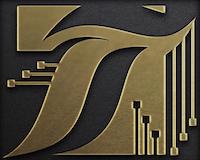Electron Preparation
Before we dive in to the actual development, we need to do some preparation work.
1. Add Quasar Electron Mode
In order to develop/build a Quasar Electron app, we need to add the Electron mode to our Quasar project. What this does is that it npm installs some Electron packages and creates /src-electron folder.$ quasar mode -a electron
Every Electron app has two threads: the main thread (deals with the window and initialization code – from the newly created folder /src-electron) and the renderer thread (which deals with the actual content of your app from /src).
The new folder has the following structure:.
└── src-electron/
├── icons/ # Icons of your app for all platforms
| ├── icon.icns # Icon file for Darwin (MacOS) platform
| ├── icon.ico # Icon file for win32 (Windows) platform
| └── linux-256x256.png # Icon file for Linux platform
└── main-process/ # Main thread source code
├── electron-main.dev.js # Main thread code while developing; read below
└── electron-main.js # Main thread code for production
When you add the Quasar Electron mode, you’ll notice that a few npm packages are installed. These are Electron specific and since Electron doesn’t follow the semver notation, it’s best that you lock the installed versions. Otherwise, other developers working on the same project may end up using on different Electron version – room for trouble. Electron makes releases quite often so features are always subject to change.
Electron-main.dev.js
This file (/src-electron/main-process/electron-main.dev.js) is used specifically for development and is used to install dev-tools. Usually it should not have to be modified, but can be used to extend your development needs. After it sets up dev-tools it imports the electron-main.js which is the place you’ll make most (if not all) of your changes.
A note for Windows Users
If you run into errors during npm install about node-gyp, then you most likely do not have the proper build tools installed on your system. Build tools include items like Python and Visual Studio. Fortunately, there are a few packages to help simplify this process.
The first item we need to check is our npm version and ensure that it is not outdated. This is accomplished using npm-windows-upgrade. If you are using yarn, then you can skip this check.
Once that is complete, we can then continue to setup the needed build tools. Using windows-build-tools, most of the dirty work is done for us. Installing this globally will in turn setup Visual C++ packages, Python, and more.
At this point things should successfully install, but if not then you will need a clean installation of Visual Studio. Please note that these are not problems with Quasar, but they are related to NPM and Windows.
2. Start Developing
If you want to jump right in and start developing, you can skip the previous step with “quasar mode” command and issue:$ quasar dev -m electron -t [mat|ios]
This will add Electron mode automatically, if it is missing.
It will open up an Electron window which will render your app along with Developer Tools opened side by side.
 Quasar
Quasar 

